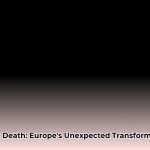Imagine a vault buried deep within an Arctic mountain, safeguarding the future of our food supply. That’s the Svalbard Global Seed Vault, a secure facility protecting the world’s crop diversity. This article explores the vault’s purpose, operations, and significance in preserving our agricultural heritage.
The Svalbard Global Seed Vault: A Bulwark Against Global Crop Disaster
The Svalbard Global Seed Vault (SGSV) is a secure seed bank on the Norwegian island of Spitsbergen in the remote Arctic Svalbard archipelago. The vault serves as a backup facility, storing duplicates of seeds conserved in gene banks worldwide. This provides a safeguard against the loss of seeds due to mismanagement, accidents, equipment failures, funding cuts, war, sabotage, disease, and natural disasters. It is managed under a tripartite agreement between the Norwegian government, the Crop Trust, and the Nordic Genetic Resource Center (NordGen).
Location and Construction
The Norwegian government entirely funded the Seed Vault, with construction costing approximately 45 million kr (US$8.8 million in 2008). Operations are co-funded by Norway and the Crop Trust. Storing seeds in the vault is free to depositors. As of June 2025, the Seed Vault conserves 1,355,591 accessions, representing over 13,000 years of agricultural history.
History and Development
In 1984, the Nordic Gene Bank (now NordGen) began storing backup Nordic plant germplasm via frozen seeds in an abandoned coal mine outside of Longyearbyen. The International Treaty on Plant Genetic Resources for Food and Agriculture (ITPGRFA) was adopted in 2001, establishing a multilateral system for plant genetic resources. Conservationist Cary Fowler campaigned for the development of the Seed Vault. A feasibility study in 2004 confirmed Svalbard as an ideal location for long-term storage.
The FAO Commission on Genetic Resources for Food and Agriculture endorsed the initiative, and in October 2004, the Norwegian Government committed to funding the Seed Vault and begin construction. The Seed Vault officially opened on February 26, 2008, with the first seeds arriving in January 2008.
Milestones and Events
Over the years, the Seed Vault has reached several milestones:
- 2009: Over 90,000 food crop seed samples were placed into storage, bringing the total number of seed samples to 400,000. The Seed Vault contained samples from approximately one-third of the world’s most important food crop varieties.
- 2010: A delegation of seven U.S. senators deposited a number of different varieties of chili pepper.
- 2013: Approximately one-third of the genera diversity stored in genebanks globally was represented at the Seed Vault.
- 2015: Researchers started sending seeds from the Middle East for safeguarding in Svalbard due to ongoing conflicts. The first major withdrawal from the vault occurred when the war in Syria forced scientists to retrieve seeds to restart agriculture in the Middle East.
- 2016: The Seed Vault experienced an unusually large degree of water intrusion due to higher than average temperatures and heavy rainfall.
- 2019: Statsbygg, the Norwegian public works agency, completed improvements to the tunnel, including waterproofing the tunnel walls, removing heat sources, and digging exterior drainage ditches.
- 2018: For the Seed Vault’s 10th anniversary, a shipment of 70,000 samples was delivered, bringing the number of samples received to over one million.
- 2020: The Cherokee Nation became the first US tribe to deposit when it safeguarded nine samples of heirloom food crops which predate European colonization.
Design and Security
The seed bank is 130 m (430 ft) inside a sandstone mountain on Spitsbergen Island, employing robust security systems. The facility is managed by the Nordic Genetic Resource Center, though there are no permanent staff on-site. Spitsbergen was chosen for its lack of tectonic activity and the presence of permafrost, which aids preservation. Being 130 m (430 ft) above sea level ensures the site remains dry even if ice caps melt.
Locally mined coal powers refrigeration units that cool the seeds to the internationally recommended standard of −18 °C (−0.4 °F). If the equipment fails, it would take several weeks for the facility to reach the surrounding sandstone bedrock’s temperature of −3 °C (27 °F), and is estimated to take two centuries to warm to 0 °C (32 °F).
Purpose and Operation
The Seed Vault’s primary mission is to provide a backup against the accidental loss of diversity in traditional genebanks. While often highlighted for its potential in major catastrophes, the Seed Vault is more frequently accessed when genebanks lose samples due to mismanagement, accidents, equipment failures, funding cuts, and natural disasters. War and civil strife have historically destroyed genebanks, such as those in Afghanistan, Iraq, and Syria.
The Seed Vault is managed under a tripartite agreement among the Norwegian Government, the Crop Trust, and the Nordic Genetic Resource Center (NordGen). The Kingdom of Norway owns the Seed Vault. The Crop Trust provides funding for ongoing operations and financial assistance to depositors. NordGen operates the Seed Vault and maintains the public database of deposits.
Seed Storage and Access
Seeds are stored in sealed three-ply foil packages and then placed into plastic tote containers on metal shelving racks. The storage rooms are kept at −18 °C (−0.4 °F). This low temperature and limited oxygen exposure ensures low metabolic activity, delaying seed aging.
Vault seed samples are copies of samples stored in the depositing genebanks. Researchers, plant breeders, and other groups cannot access seed samples directly from the Seed Vault; instead, they must request samples from the depositing genebanks. The deposited samples do not constitute a legal transfer of genetic resources, maintaining a “black box” arrangement.
Each depositor signs a Deposit Agreement with NordGen, clarifying that Norway does not claim ownership over the deposited samples, and ownership remains with the depositor, who has the sole right of access to those materials.
Withdrawals and Usage
The Syrian civil war highlighted the functionality of the black box arrangement. The International Center for Agricultural Research in the Dry Areas (ICARDA) withdrew backup samples from the Seed Vault to regenerate seeds after being unable to maintain its genebank in Tel Hadya, Syria. These seeds were planted in fields in Lebanon and Morocco, multiplied, and later returned to the Seed Vault or added to ICARDA’s genebanks in Lebanon and Morocco.
As of May 2024, these remain the only withdrawals from the Seed Vault.
The Role of the Crop Trust
The Crop Trust, officially known as the Global Crop Diversity Trust, coordinates shipments to the Seed Vault in conjunction with the Nordic Genetic Resource Center. The Crop Trust provides most of the annual operating costs and has established an endowment fund, while the Norwegian government finances upkeep of the structure itself.
Recognition and Impact
The Svalbard Global Seed Vault was ranked at No. 6 on Time‘s Best Inventions of 2008 and was awarded the Norwegian Lighting Prize for 2009. The Project Management Institute ranked it the 10th most influential project of the past 50 years.
Seed Capacity and Depositors
The facility has a storage capacity of 4.5 million seed samples. As of March 2025, 127 depositors safeguard their crop samples in the Seed Vault, including international, regional, and national genebanks, as well as indigenous communities.
Securing the Future: Challenges and Mitigation Strategies
Environmental Concerns and Solutions
One of the most pressing challenges is addressing climate change. Mitigation strategies include:
- Enhanced drainage systems to manage meltwater.
- Improved waterproofing to prevent water intrusion.
- Monitoring permafrost conditions to detect potential instability.
- Implementing energy-efficient cooling systems to reduce the vault’s carbon footprint.
Funding and Sustainability
Ensuring long-term funding is essential for the vault’s operation and maintenance. Strategies for sustained funding include:
- Diversifying funding sources through government contributions, philanthropic donations, and private sector partnerships.
- Establishing an endowment fund to provide a stable source of income.
- Promoting public awareness to garner support for crop diversity conservation.
Risk Management
Effective risk management is crucial for protecting the vault’s contents. Key strategies include:
- Implementing robust security measures to prevent unauthorized access.
- Maintaining detailed records of seed deposits and withdrawals.
- Conducting regular audits to ensure operational efficiency.
- Developing emergency response plans to address potential crises.
Recent Deposits and Future Outlook
Recent deposits underscore the ongoing commitment to preserving crop diversity. A deposit in October 2024 saw over 30,000 seed samples added to the vault, including those from conflict zones and regions threatened by climate change. This event signals increased recognition of the vault’s importance as a safeguard against global crises. In February 2025, nearly 14,000 more samples were deposited, further demonstrating the global commitment to protecting plant genetic resources.
The Svalbard Global Seed Vault is more than just a storage facility; it is a symbol of international collaboration, a testament to human foresight, and a crucial resource for safeguarding our food future.
The Vault in Popular Culture
The seed vault is a common reference in different forms of fiction and media, often as an example of international collaboration, similar to the International Space Station, as a media symbol for the potential of doomsday scenarios, and a point of conversation about the sustainability of human society. Even before the Seed Vault officially opened, there was a feature article in The New Yorker. Science communicators have been important in taking the project from relative obscurity, to global awareness. For example, Cary Fowler gave a TED talk on the Seed Vault at Oxford in 2009. The Seed Vault was the inspiration for Ibsen International’s art project “The Seed”, supported by the Norwegian government. There are several children’s books about the seed vault, including The Garden at the End of the World, and Just in Case: Saving Seeds in the Svalbard Global Seed Vault. The seed vault has also been the subject of two feature length documentaries: Seeds of Time and Seed Battles, as well as Forever Securing the World Food Supply. In 2011, Norway issued a postage stamp to honor the seed vault.
(Note: Reliable news sources.)
(Illustration image: put here)
(Video link: put here)
said [Full Name and Title], [Position] at [Institution].
said [Fisherman’s Name]
- The Accidental Breakthrough: Penicillin’s Discovery and Impact - August 1, 2025
- Medieval Universities: Shaping Modern Academia - August 1, 2025
- The Radium Girls: Workplace Safety Lessons from a Tragic Past - August 1, 2025
















